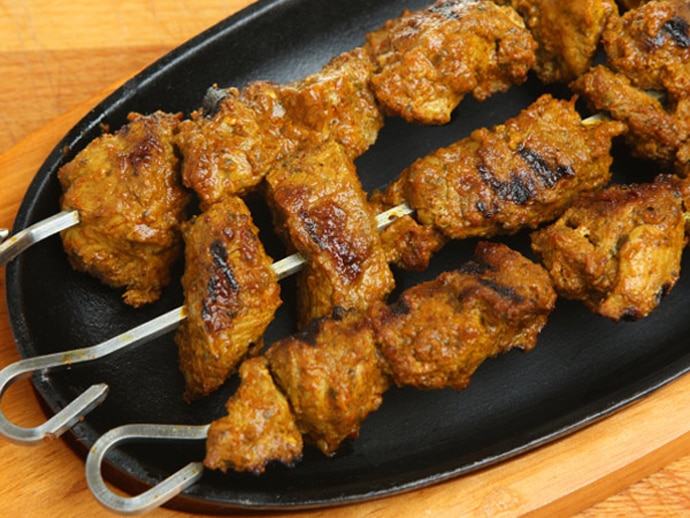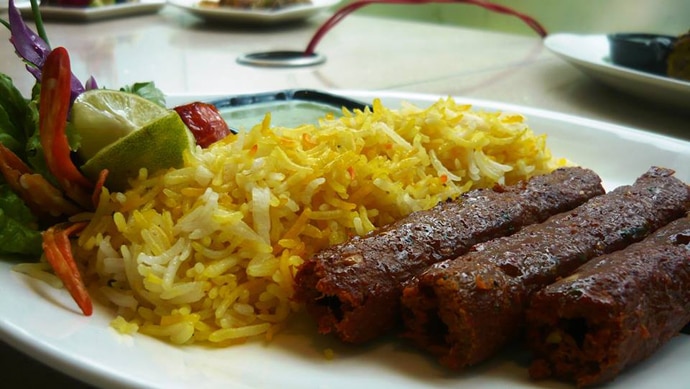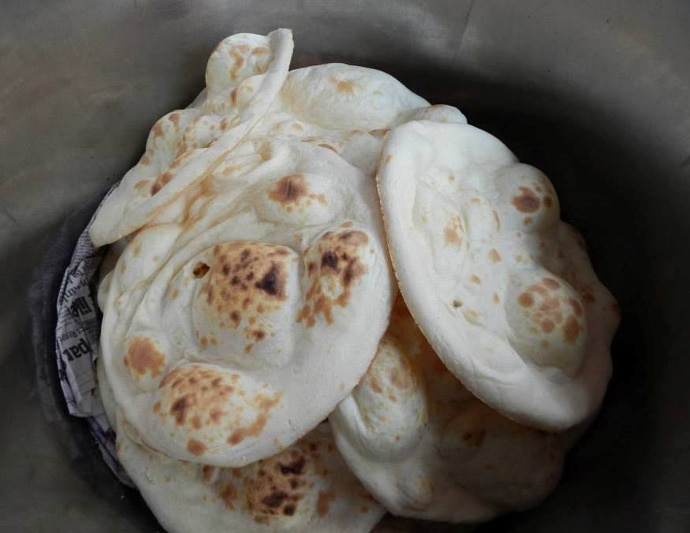Health lessons from the kitchens of the Nawabs

Yes, you read that right. Even amidst excesses, there are some gems that one can gleam off the royal rasoi; an apt lesson for these rich festive times (that it is possible to eat festive and healthy both).
Last week, as I sat next to 86-year old Grand Master chef Imtiaz Qureshi celebrating 25 royal years of Dum Pukht at ITC Maurya, in between finger licking good food, I asked him why Awadhi/Lucknowi cuisine was universally considered unhealthy. Why its image was that of a greasy, curry laden, heavy meal that is terrible for our waist, heart and digestion.
 |
He looked up from the bowl of arhar dal he was relishing, with khameri roti, shrugged his head, smiled and said that royals of yesteryears actually followed a fool proof way of eating healthy. That, of course, got me interested and we went on to have a conversation centred around the food-wise ways that the royals followed in the good old times, a lot of which he says he has incorporated in the Dum (to breathe) Pukht (to cook) style of cooking (slow cooking in a sealed, heavy, bottom vessel).
Excerpts/lessons from the tête-à-tête are faithfully listed below:
It is so easy to berate what is ours and praise what is foreign, yes, even in food. So, suddenly, kiwi is better than amla, chia superior to sabja seeds and exotic cuisine like say Peruvian considered healthier than Indian. Whereas the fact is that what's original to the land where we live is what our bodies are conditioned to eating and thus digesting well. The Nawabs knew this well, and preferred to eat what was local and seasonal.
 |
Their bawarchis (cooks) had a standing order: the food had to appeal to all their senses. It had look good (eye), give out good aroma (nose) and of course taste appetising (palate). All three were given equal importance. Now of course science too has told us that nutrients from good looking food (that you anticipate enjoying) are far better absorbed in the body, as digestion kicks in better.
Innovation was constant. Nawabs were very easily bored, so demanded and expected constant innovation from their bawarchis, who obliged. As I sat chomping the innovative Murgh Narangi Korma (chicken simmered in a gravy of oranges and saffron) I couldn't help but agree. To be honest a combination of orange and chicken did confuse me for a bit, but it was so delicious that I can't help but agree that constantly innovating is a good lesson for right eating. It keeps the palate fresh and helps include variety in the diet. Stagnation of (meal) ideas is what pushes us towards junk (think about it!). Awadhi one-pot meals featuring rice, vegetable and mutton usually served for lunch too are an extremely healthy permutation I feel.
 |
Bawarchis then worked in tandem with the hakims (doctors) incorporating their inputs all the time. They certainly did not shy away from taking advice from specialists on what food was right or wrong for health, a good lead to follow.
Nawabs were all big meat eaters, that is well known, but a fact less known is that they also ensured enough vegetables in their diet. Raw papaya, methi (fenugreek leaves) and spinach were added to most meat dishes, and a side dish of shalgam (turnip; a big favourite with them), bhindi (okra), aloo (potato) and more ensured that they did not suffer from constipation due to lack of fibre in the non-vegetarian food.
 |
Their cooking was big on spices, and the most popular ones were Hara masala (garlic, ginger, methi, mint and coriander), Potli masala (a mixture of 21-22 spices) and Biryani masala. Spices, enough research has proved, are anti inflammatory and help keep multiple lifestyle disorders at bay. They also had a different set of masalas for winter and for summer - thanda masalas and garam masalas... seasonal menus were created accordingly. Again very sensible! Another commonsensical practice followed was to serve the masalas on the side when serving khichda, nihari etc… to season as per requirement. Usually a lot of healthy chutneys made with antioxidant rich herbs and ingredients were served along with the food.
 |
As a rule, only natural colors were used for cooking - saffron, red chili and haldi, no artificial colors (so no chemicals) ever. The suspiciously red tandoori chicken you eat off the roadside stalls (and some restaurants too) had no place in their plates, and shouldn't be in yours too.
Food was always rich, but never heavy. It was cooked in ghee usually but the calculations were so precise that only the amount of fat the mutton (or the vegetable) would soak up was used for cooking... According to Chef Qureshi, ghee or oil floating on top of a dish equals terrible cooking.
So who says Awadhi cuisine is unhealthy; made the right way, the original way, it can be and is supremely healthy. Stop berating it and enjoy it without guilt.

